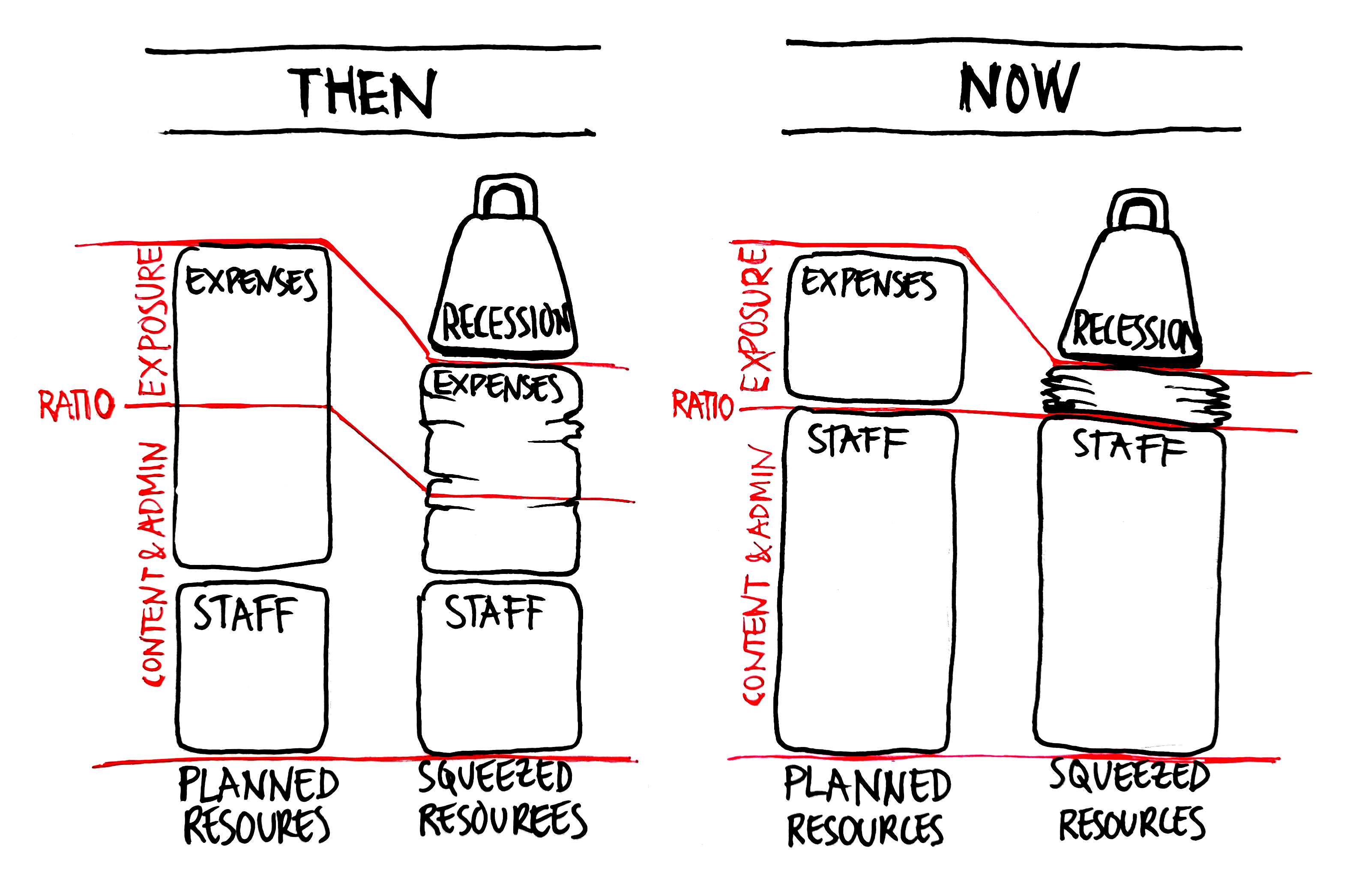News/
Analysis

Why your shrinking budget will penalize you more today
Hello, budget season. Every marketing manager’s favourite time of year. If you're forced to tighten your belt a hole or two this time, you can take comfort that you're probably not alone. However, a reduced marketing budget may sting more than before as the consequences may be greater.
A good indicator of how you use your marketing resources is to have a good ratio between how much you spend on creating the content of your communication and how much you spend on disseminating the content. A popular rule of thumb among seasoned marketers is 80:20. If you can spend roughly 80 per cent of your investment on exposure (media) and 20 per cent on content creation, there is a good chance* of reaching many customers with powerful new and existing content.
When shrinking the marketing budget, the quickest and easiest way is to cut external costs. Reducing internal staff to cut costs is a different story.

Even if internal resources have made it possible to be agile in small ways, there is often less flexibility for the larger, more important priorities in practice.
— Robert Ryberg
But compared to the recession of about 15 years ago, the ratio of external marketing communication costs to internal staff costs has changed (see my neat sketch).
Back then, the majority of costs were external. A combination of media and agency costs. It was possible to cut costs, reducing content creation and exposure, without upsetting the balance too much.
One less campaign and the budget constraint was fixed. But for those campaigns you could still afford to do, you could create both good content and achieve sufficient reach.
Now that many marketing departments have replaced their external agency costs for creation, production, media buying and analysis with their in-house expertise, much of the budget has turned into internal staff costs. More money is also spent on technology. In sum, the budget is locked up in costs that are not easily influenced.
The external costs remaining in the budget consist primarily of media exposure. So when you have to tighten the belt, it is mainly the exposure of the messages that is affected. However, the content taximeter continues to tick as the cost of creation and production (staff and technology) remains.
The same amount of content, but fewer people see it, and the favorable balance has been upset.

The relationship between external costs and staff costs has changed. Today, if the marketing budget has to be cut, there is a great risk that exposure will take the hit. This can significantly reduce the impact of the resources available.
The risk is that a budget cut may force you to do less and weaker marketing communication. You will be punished twice by the same blow.
There is also an interesting paradox here: While you often hear marketers talk about “everything is moving faster”, “we must be able to act faster”, and “we must work more agile”, many have tied up their marketing resources in their systems and internal specialists. It is, therefore, very difficult to adapt their priorities to the situation. Even if internal resources have made it possible to be agile in small ways, there is often less flexibility for the larger, more important priorities in practice.
This means that whether you want to prepare for more challenging times and secure impact or become more agile, it can be valuable to consider the flexibility of your marketing organization.
A healthy balance between internal and external resources can have many healthy effects. It may become easier to fit into tight budget trousers but still be agile, fast and able to run long distances. And upcoming budget seasons may create slightly less anxiety.
* However, the rule of thumb doesn’t work well if you have fragmented your communication into hundreds of activities and messages, as many have. There simply won’t be much creativity left for each impact, media buys will be expensive, and your administration will increase.
The article was initially published in the Swedish marketing trade magazine Resumé.